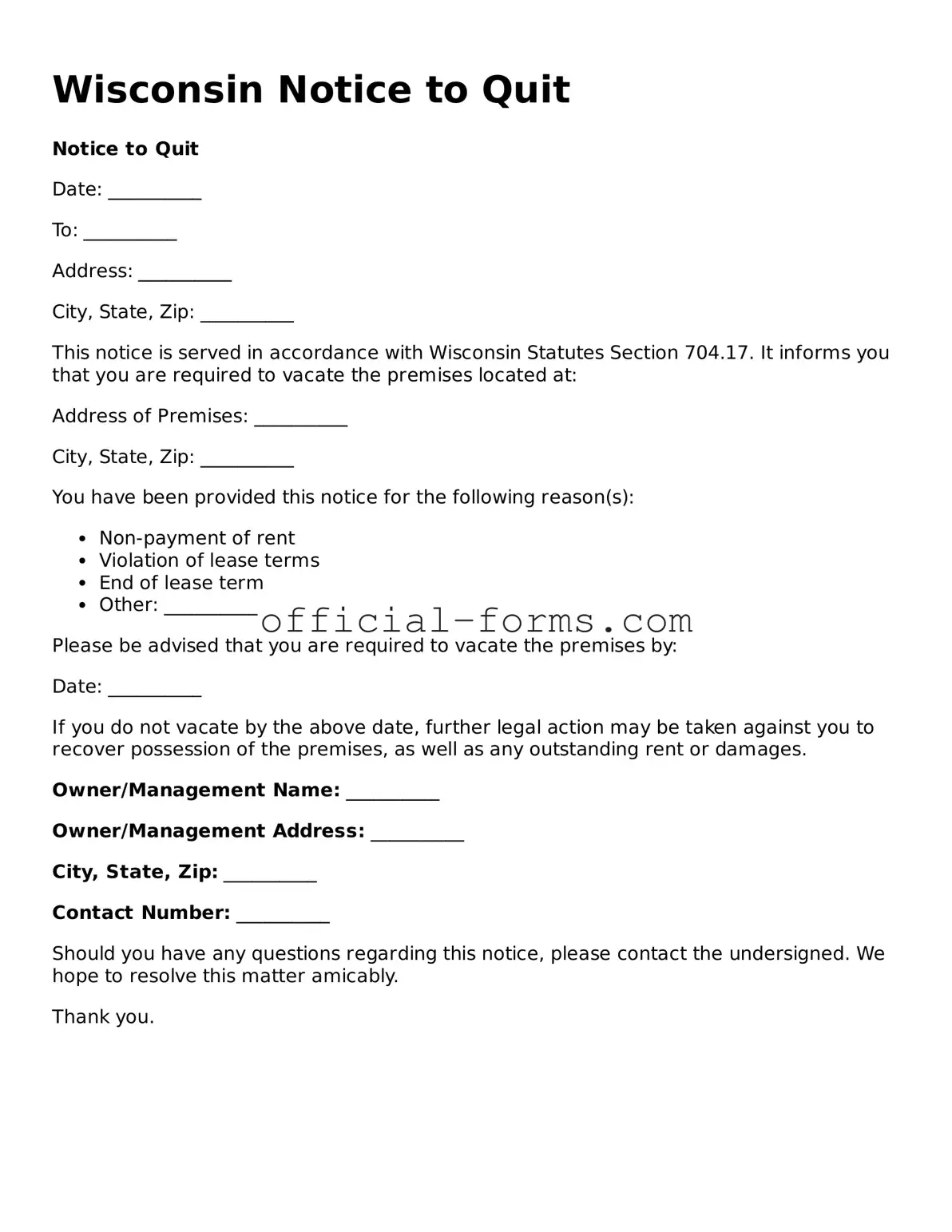The Wisconsin Notice to Quit form serves as a crucial document in the landlord-tenant relationship, particularly when it comes to terminating a rental agreement. This form is typically used by landlords to formally notify tenants of their intention to end the tenancy, providing a clear timeline for vacating the premises. Depending on the circumstances, the notice period can vary, often requiring tenants to vacate within 5 to 30 days. The form must include specific information, such as the date of the notice, the address of the rental property, and the reason for termination, whether it be for non-payment of rent, lease violations, or other grounds. It is essential for landlords to adhere to the legal requirements outlined in Wisconsin law to ensure the notice is valid and enforceable. Tenants, on the other hand, should understand their rights and the implications of receiving such a notice. By following the proper procedures, both parties can navigate the complexities of rental agreements with greater clarity and confidence.
